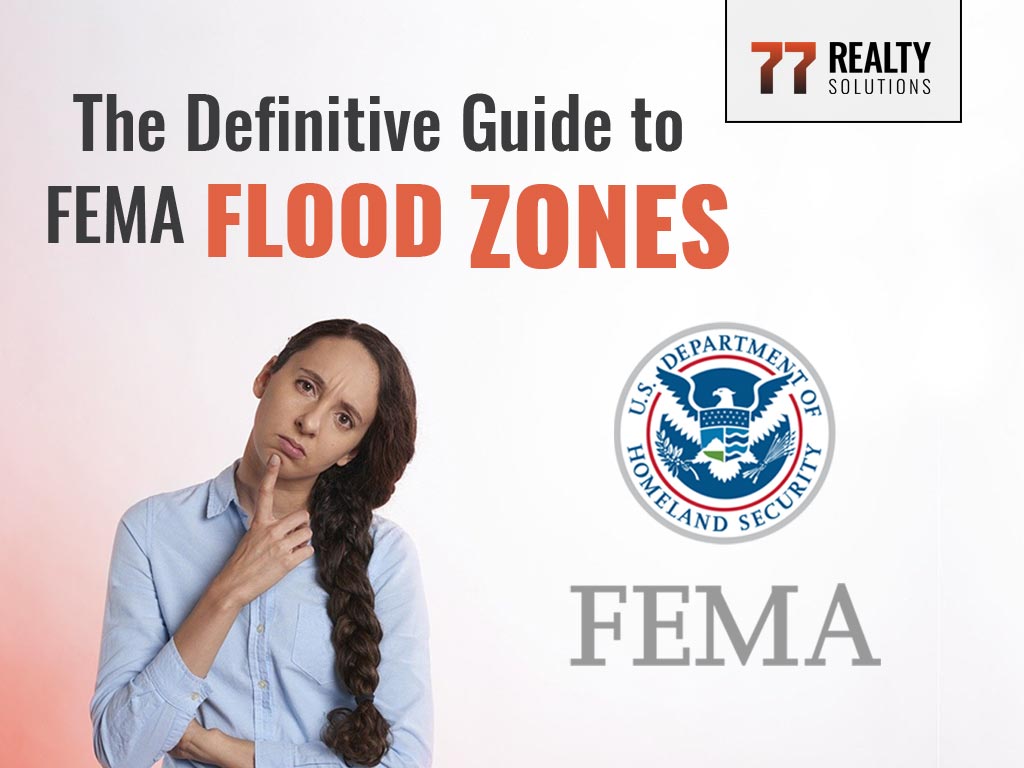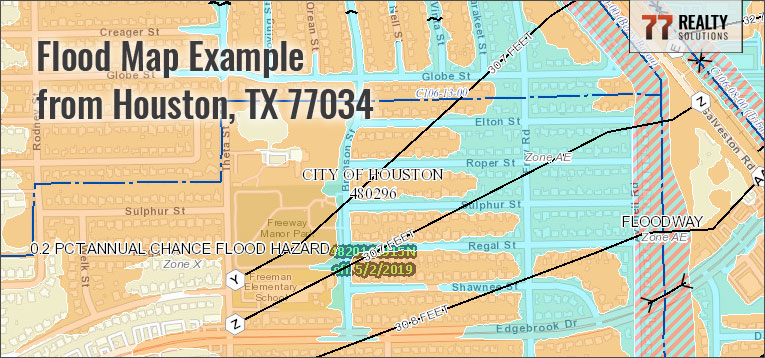
The Definitive Guide to FEMA flood zones and Determining Yours | Houston, TX
I live in Houston, TX and ever since Hurricane Harvey hit, we all want to make sure we understand the flood zones. Flood zones designations are a really good thing. FEMA isn’t guaranteeing anything by determining them but it gives you the ability to make necessary arrangements.
All this info is on the FEMA website but good luck navigating that beast so here is what I did, I took all the information and condensed it to what you needed to know. The legal jargon in plain English.
What is a flood zone?
A flood zone is how FEMA determines the likelihood of your property flooding in a given amount of time

Am I in a flood zone?
The short answer is yes. We all are….unless you are in an area that FEMA has not designated yet but if you are in that area chances are you are in an X Zone (more on that below).
FEMA has designated everyone to be in a flood zone but the question isn’t, “Am I in a flood zone?” but, “Which flood zone am I in?”
FEMA has a tool that allows you to find out the flood zone for any property.
Find our what your flood zone is here
Put in an address and this will send you to the FEMA site to get the info.
What are the different zones and what do they mean?
Each zone has been designated with a letter which corresponds to the FEMA code. FEMA goes into more detail for each zone but I tried to break each one down.
- Low-Flood: The chances of flooding are low but Hurricane Harvey showed us there is always a chance. There is a 1 in 500 chance (.2% probability) of the property flooding in a given year.
- Zone C, Zone X (unshaded): Locations that are outside the 500-year floodplain. Flood insurance will be cheapest in this area.
- Medium-Flood: Chances of flooding are medium as you are somewhere in between the 500 year floodplain and the 100 year floodplain.
- Zone B, Zone X500 (shaded): Areas with average depths of less than 1 foot or with drainage areas less than 1 square mile; and areas protected by levees from 100-year flood.
- Heavy-Flood: These areas have a 1 in 100 annual chance (1% probability) of flooding. This is also known as the base flood plain.
- Zone A: This area gets inundated by a 1% annual chance of flooding – No BFEs (Base Flood Elevation) have been determined.
- Zone AE: This area gets inundated by a 1% annual chance of flooding – BFEs have been determined.
- Zone AH: This area gets inundated by a 1% annual chance of flooding (usually an area of ponding) – BFEs have been determined. Flood depths range from 1 to 3 feet.
- Zone AO: This area gets inundated by a 1% annual chance of flooding (usually sheet flow on sloping terrain) – Average depths have been determined. Flood depths range from 1 to 3 feet.
- Zone AR: This area gets inundated by a 1% annual chance of flooding (usually sheet flow on sloping terrain) – Average depths have been determined. Flood depths range from 1 to 3 feet. This area gets inundated by flooding – BFEs or depths have been determined. This area was and will be again protected from the 1% annual chance of flooding by a Federal funded flood protection system.
- Zone A1-A30: This area gets inundated by a 1% annual chance of flooding – BFEs have been determined.
- Zone VE: This area gets inundated by a 1% annual chance of flooding and includes a velocity hazard (wave action) – BFEs have been determined.
- Zone V(1-30): This is a coastal flood area that includes a velocity hazard (wave action) – BFEs have not been determined.
- Not-Determined: Houses are rarely in these areas unless you are out in the country but I include them since this is the definitive guide to flood zones.
- Area Not Included (ANI),(N): Simply put, these areas have been designated yet.
- Zone D: It’s not exactly determined but there is possible flooding.
- Undescribed (UNDES): A body of water (pond, lake, ocean, etc.) in a community’s jurisdiction without an undefined flood hazard.
- FWIC: A contained floodway area within the channel banks but channels are smaller than the scale will allow. A 3 meter channel width is shown.
- 100IC: A 1% annual flooding area within the channel banks but channels are smaller than the scale will allow. A 3 meter channel width is shown.
- 500IC: A 0.2% annual flooding area within the channel banks but channels are smaller than the scale will allow. A 3 meter channel width is shown.
Now that I know what zone I’m in, what do I do?
Flood Insurance
Flood insurance, as far as I know, is available from most insurance companies for any of the flood zones. Depending on what zone the property is in will determine the price. Flood insurance is purchased by FEMA but done through your regular insurance agent.
Insurance is bought in yearly installments but if you sell the house before the year is completed, you can request a refund the remaining months. Send your final closing statement to your insurance agent and they can handle it for you.
If you are in any of the Low Flood zones then flood insurance is around $500 annually. Heavy flood zone areas will need an Elevation Certificate. My experience is that heavy flood zone area insurance costs about $3k-$4k annually. If you live on Galveston island you are probably in an AE flood zone.
An elevation certificate is a document that lists a building’s location, lowest point of elevation, flood zone and other characteristics, according to the Federal Emergency Management Agency (FEMA). It is used to enforce local building ordinances and to help determine flood insurance rates. – Allstate
Lender Requirements
Make sure you check with your lender if you are buying a property as they may have certain requirements on the loan depending on what flood zone you are in.
So there you have it. The Definitive Guide to FEMA Flood Zones.
I buy houses in Houston down to Galveston in all flood zones.
If you have any questions about Flood Zones, especially in Houston down to Galveston, contact me and I will do what I can to help out.
Authored by Eric Wargo, broker for Lion Drive Realty, a Texas real estate brokerage that allows Realtors to keep 100% commission every time.
Click to get your offerHaz clic para recibir tu oferta



